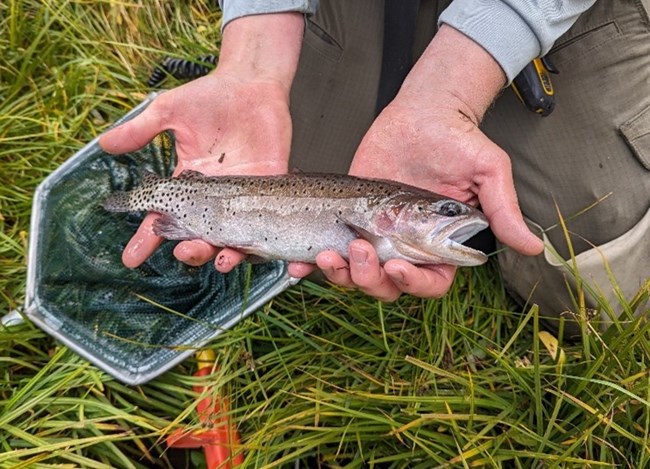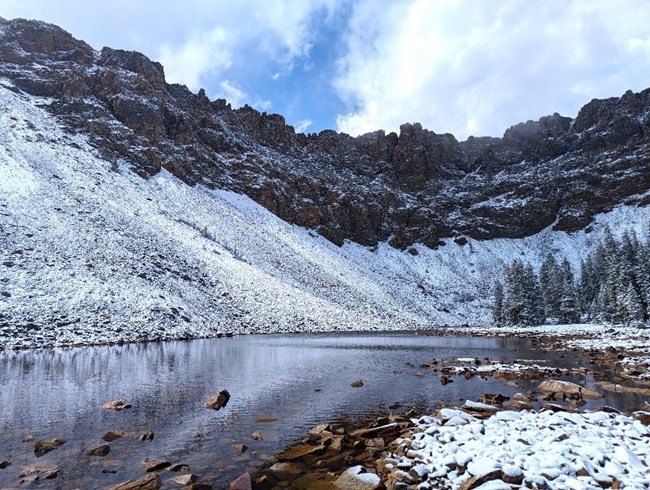Part of a series of articles titled The Midden - Great Basin National Park: Vol. 23, No. 2, Winter 2023.
Article
Fish Move Postponed
This article was originally published in The Midden – Great Basin National Park: Vol. 23, No. 2, Winter 2023.

NPS Photo/Jack Clark
Bonneville cutthroat trout (BCT) is the only native trout in eastern central Nevada. At one point, it was thought no true genetically pure populations remained anywhere. Conservation efforts over the past four decades have found a few pure populations isolated in small mountain streams both in Nevada and other surrounding states and have slowly been reintroducing them back into their rightful habitat. BCT now occupy an estimated 50% of their historic range within Great Basin National Park. There are five streams with pure BCT located within the Park, but there are no well-established populations present in any of our alpine lakes. We are currently working on establishing self-sustaining populations of BCT in both Johnson and Baker Lakes. Johnson Lake has had an initial transplant of BCT.
The Park has been working to get Baker Lake ready for BCT. Park staff and partners treated the lake in September 2021 and August 2022 to eliminate non-native brook trout that had been introduced to the lake. This is a necessary step that must be completed before the native BCT can be released. A final test before the introduction indicated that there still may be brook trout active in the area.
One of the monitoring techniques used in the park to see what fish are present in bodies of water is to sample for eDNA or environmental DNA. This is simply DNA that is present in the water samples. Samples were sent to Rocky Mountain Research Station (RMRS) and tested for fish DNA.
Five water samples were taken for testing, and each was tested three times. Out of all the samples tested one came back with a weak positive result for brook trout DNA. RMRS was kind enough to retest the sample, which this time came back completely negative for any trout DNA. We do not know for certain if there is still an invasive trout in the lake, if the original test was a false positive, or if DNA from a fish that died two years ago had been preserved in the cold water and silt of Baker Lake. Most DNA will break down in direct sunlight or water after 24 to 72 hours, however it can last much longer in the right conditions. (Instead of a mosquito trapped in amber containing dino DNA, think of a few buried fish scales.)

NPS Photo/Jack Clark
The fish move will be postponed until next summer. If a member of a non-native species is confirmed present, another treatment may be administered, followed by more surveys before moving the BCT. The Backcountry Horsemen of Nevada - High Desert Chapter will be assisting in the actual transportation of the fish. Mature BCT will be moved up the mountain to the lake in large containers once the lake is confirmed to be free from invasive trout. BCT will be pulled from other established, pure populations within the Snake Range as to not overly stress one single population and to ensure a wide breadth of genetic diversity in the new population.
Hopefully we can continue moving forward with this project soon, and the BCT will thrive and give us a new, stable population to pull from for future conservation efforts.
Last updated: December 5, 2023
